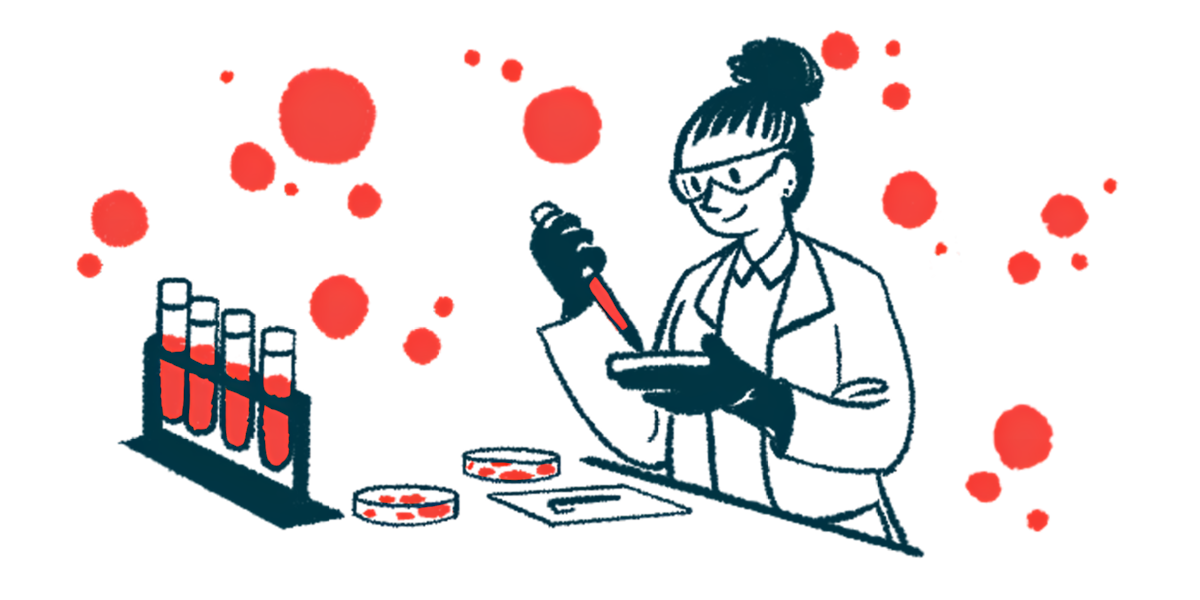FVIII from advanced liver organoids stops bleeding in hemophilia A mice
Study details scientists' development of lab-grown 'mini organs'

Scientists have developed advanced liver organoids — lab-grown “mini-organs” that mimic the function of organs in the body — that are capable of growing their own functional blood vessels and producing clotting factors that could eventually be used to treat hemophilia, according to a study.
In a mouse model of hemophilia A, the factor VIII (FVIII) clotting protein produced by the organoids was able to stop bleeding after an injury.
“Our research represents a significant step forward in understanding and replicating the complex cellular interactions that occur in liver development,” Takanori Takebe, MD, PhD, director for commercial innovation at the Cincinnati Children’s Center for Stem Cell and Organoid Research and Medicine, said in a news story.
Takebe, the study’s senior author, said this advancement in organoid generation “opens up new possibilities for modeling a wide range of human biology and disease, and treating coagulation [blood-clotting] disorders and beyond.”
The study, “Self-organization of sinusoidal vessels in pluripotent stem cell-derived human liver bud organoids,” was published in Nature Biomedical Engineering.
Organoids have become important tools in medical research
People with hemophilia are deficient in important blood-clotting proteins that are normally produced in the liver, leaving them susceptible to excessive or spontaneous bleeding. The most common form is hemophilia A, which is marked by the lack of FVIII.
Standard treatment involves factor replacement therapy to supply the body with a version of the missing clotting factor, but some people develop neutralizing antibodies, or inhibitors, against these therapies that make them less effective.
More recently, gene therapies that work to give the body the DNA blueprint to produce its own clotting factors have become available, but not all patients are eligible for them.
In recent years, organoids have become important tools in medical research, allowing scientists to study disease mechanisms and test therapeutic strategies in a clinically relevant model.
Essentially, human-derived stem cells are grown into mature cell types that make up an organ. This happens in a specialized cell culture environment that provides the structural support cells need to form a three-dimensional structure.
While these so-called mini-organs can mimic the function of the real organ in many ways, they’re not a perfect replica. Historically, liver organoids have lacked functional nerves and blood vessels that would normally connect the organ to other tissues in the human body.
But now, after a nearly decade-long process, researchers have found a way to grow liver organoids with fully functional, liver-specific blood vessels.
Approach shows promise for treating other conditions
This was achieved by growing stem cells into the precursors that mature into liver sinusoidal endothelial cells. These are the cells that line small blood vessels in the liver, and importantly, produce some blood-clotting proteins, including FVIII.
This approach not only allowed functional blood vessels to grow, but it made the liver organoids capable of producing and releasing functional FVIII, along with other clotting proteins.
The organoid fluid containing FVIII had similar or slightly lower activity than a standard FVIII replacement therapy, but didn’t lose as much of its function in the presence of inhibitors.
These advanced liver organoids can secrete these coagulation factors. If they can be produced at scale, they could become a viable treatment source that would benefit people who have developed inhibitors or are not indicated for gene therapy.
In a mouse model of hemophilia A, administration of the organoid-generated FVIII was able to stop tail bleeding after an injury. When organoid tissue was transplanted into mice, it was able to take hold and connect to the existing blood vessels. This led to durable FVIII production and bleed control.
“These advanced liver organoids can secrete these coagulation factors,” Takebe said. “If they can be produced at scale, they could become a viable treatment source that would benefit people who have developed inhibitors or are not indicated for gene therapy.”
Beyond hemophilia, the approach also has promise for treating people with other conditions who don’t naturally produce enough clotting factors. In the long term, the scientists believe sophisticated liver organoids could actually supply tissue to repair damaged livers.
“Cellular- or organoid-based regenerative technology offers an alternate way of developing additional therapeutic concepts for coagulation disorders,” the researchers wrote, noting additional studies are needed to learn more about the properties of organoid-produced clotting proteins.








